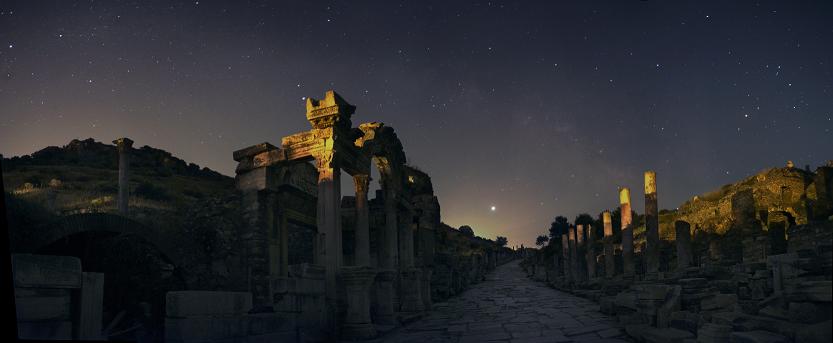
SAINT OF THE DAY
The Lives of the Saints, Martyrs, Exemplars and Prophets of ANTINOUS the GAY GOD
Updated for Each Liturgical Feast Day
By
Antonyus Subia and Hernestus Gill
Priests of Antinous
JUNE 3rd

SAINT OF THE DAY
The Lives of the Saints, Martyrs, Exemplars and Prophets of ANTINOUS the GAY GOD
Updated for Each Liturgical Feast Day
By
Antonyus Subia and Hernestus Gill
Priests of Antinous
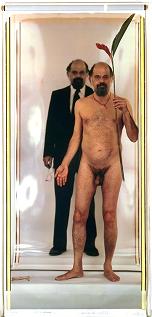
On June 3rd the Religion of Antinous honors Saint Allen Ginsberg who was born on this day.
St. Allen Ginsberg was an early proponent of freedom for men who loved other men, having already in 1943 discovered within himself "mountains of homosexuality."
He expressed this desire openly and graphically in his poetry.
He also struck a note for gay marriage by listing Peter Orlovsky, his lifelong companion, as his spouse in his Who's Who entry.
Later homosexual writers saw his frank talk about homosexuality as an opening to speak more openly and honestly about something often before only hinted at or spoken of in metaphor.
Also, in writing about sexuality in graphic detail and in his frequent use of language seen as indecent he challenged — and ultimately changed — obscenity laws.
We consecrate Irwin Allen Ginsberg (June 3, 1926 — April 5, 1997) as a Blessed Saint and Exemplar of Antinous for attacking what he saw as the destructive forces of materialism and conformity in modern society.
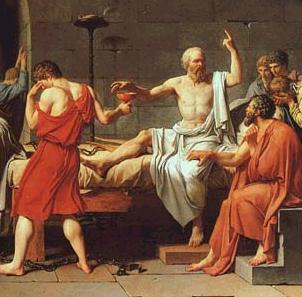
On June 4th the Religion of Antinous honors Saint Socrates and also Saint George Cecil Ives.
The most Divine and gentlest of all Philosophers was born on this day in 469. He was the son of the sculptor Sophroniscus, an artist, whose profession Socrates attempted during his youth.
The artist's love of beauty was to be the foremost drive of his life. The fortune that his father's art left gave the young Socrates the independence to begin a life spent in the adoration and service of wisdom.
He was told that the Oracle of Delphi had pronounced that there was no man wiser than he, but because he felt that he was the greatest fool, he spent his life trying to disprove the Oracle by questioning the most purportedly wise men only to discover that those who professed wisdom were the least possessed of it.
His method of inquiry was the birth of human science because he found that those who understood virtue would naturally follow in its ways, while those who were ignorant of virtue would proceed without its benefit. He proclaimed that "the proper study of mankind is man," and his philosophy centered on temperance, piety, duty to parents, brotherly love, fidelity in friendship, and diligence.
He was an admirer of male, youthful beauty, and devoted his life towards the awakening of virtue in the hearts of young men. For this, in the year 400 B.C. he was put on trial by the many enemies he had made in the ruling classes of the city of Athens and condemned with these words: "Socrates is guilty of crime; first, for not worshipping the gods whom the city worships, and for introducing new divinities of his own; next for corrupting the youth. The penalty due is death."
He was sentenced to drink poison, which he readily accepted, dying as a virtuous martyr, for homosexuality and for human social consciousness.
Though he never wrote a word, he is remembered through the writings of his student, Plato, whose legacy eclipsed that of Socrates, though it was delivered and upheld as the very words of Plato's master, the Divine Philosopher Socrates, who was said by Cicero to have bright the love of wisdom down from the heavens to mankind.

George Cecil Ives was born on October 1, 1867 in England. While in London, in 1892, a gentleman by the name of Lord Alfred Douglas encouraged him to join "The Cause", which was an early British movement to bring an end to homosexual persecution. Ives was a friend of Oscar Wilde and attempted to enlist him, but was unsuccessful.
In 1897, believing that "The Cause" could not be openly discussed due to the extreme moral restriction of his age, Ives decided to go underground and founded the Order of Chaeronea, which was a secret society for homosexuals.
The name and spirit of the order was taken from the battle in which the Sacred Band of Thebes, the corps of 300 pairs of gay lovers, was defeated by Alexander and Phillip at the Battle of Chaeronea. The 300 had to be annihilated by Alexander because they refused to surrender.
Taking this Army of Lovers as their model for courage in the face of oppression, the Order of Chaeronea organized powerful and wealthy homosexuals who were otherwise unable to meet in public, into a secret political and spiritual force.
Saint George Cecil Ives, the guiding light of this first religious organization devoted to the sacredness of homosexuality, worked closely with other prominent homosexuals of the time such as Dr. Magnus Hirschfeld and Edward Carpenter, both of whom are Blessed Saints of Antinous.
In his voluminous writings, George Cecil Ives refers to Walt Whitman (another Antinoian Saint) as "The Prophet" and used lines from Whitman's poetry in the ritual and ceremony of the Order of Chaeronea.
He is numbered as one of the Uranian poets, and referred to Antinous as a symbol of male beauty and perfection.
For his effort to undermine the oppression of homosexuals, for the holiness and sanctity upon which he upheld our sexuality, and for calling out to our beloved Antinous, we thank Saint George Cecil Ives, and pray to him to aid us in the continuation of his divinely inspired work. He died on this day in 1950.
.jpg)
On June 8th the Religion of Antinous commemorates the flamboyantly gay man who is the father of modern archaeology, our own Saint Johann Joachim Winckelmann.
Born in Stendal, Germany, on December 9, 1717, he is called the father of modern archaeology because of his scientific studies of the excavations of Pompeii and Herculaneum in Italy.
He was a student of classical art and his many writings, including the famous History of Ancient Art, are a testament to his adoration of the male form as manifested in Greek and Roman sculpture. He wrote openly about his homosexual relationships as early as 1763, and eventually found employment with Cardinal Allesandro Albani, whose art collection he catalogued.

Winckelmann is among the first to conduct a serious study of the art of Antinous, and to have written openly about the significance of the relationship between Hadrian and Antinous. He is also believed to have been part of the first revival of the Religion of Antinous, and Priapus, led in secret by Cardinal Albani.
Winckelmann was murdered in his hotel room in Trieste Germany by a young man with whom he was having a casual love affair, on the 8th of June 1768. He was stabbed multiple times including repeated wounds to the groin, evidently out of sexual violence.
For his work as a student of the art of Antinous, and as an early believer the Religion of Antinous, and for the violence of his death, Johann Joachim Winckelmann is revered as an Innocent Martyr of the Religion of Antinous, perhaps the most specifically Antinonine of all those who died as a consequence of their desire for beautiful men.
Notice the painting above by Anton Von Maron. Winckelmann sits in a magnificent costume, gazing on an engraving of Antinous and writing his thoughts, as though the painter has distracted him from his meditation ... but we can be be sure that Winckelmann wanted us to know that Antinous was at the forefront of his thoughts.

On June 13th the Religion of Antinous commemorates the life of King Ludwig II of Bavaria, who died on this date in 1886 under mysterious circumstances in an Alpine lake. As with Antinous, his death is shrouded in myth and legend and it will never be known whether he drowned accidentally or whether he was assassinated.
Born August 25, 1845, Ludwig was only 18 when he ascended to the throne of Bavaria in 1864. He was the last truly sovereign monarch of that Alpine nation, which was engulfed by Prussia during his reign and very much against his wishes.
While the king of Prussia was planning a war against France, and various other crowned heads of Europe were scheming and conniving to commit war and bloodshed, "Mad" King Ludwig (as he was called) devoted the entire resources of his land to the performing and visual arts, commissioning operas by Richard Wagner and building the most astounding fairy-tale castles and palaces.
In the build-up to the Franco-German war, as troops were marching off to battle, Ludwig did not bother to see off his military forces. Instead, he went off on a jaunt to Switzerland to confer with Wagner on plans for a Wagnerian opera house in Munich. The opera house was never built, due to opposition from local critics. Instead, it was built at the Bavarian town of Bayreuth to the specifications of the composer, paid for by Ludwig personally.
Shockingly, in a staunchly Roman Catholic land, Ludwig never married and instead surrounded himself with handsome manservants, artists and architects.
Indeed, Ludwig is best known as a closeted gay man whose legacy is intertwined with the history of art and architecture, as he commissioned the construction of several extravagant fantasy castles (the most famous being Neuschwanstein below) and was a devoted patron of Wagner, who might never have finished his "Ring" cycle without Ludwig's ostentatiously generous support.
In an age of fiercely militaristic nationalism, Ludwig came under intense pressures from his advisers to abandon his artistic projects and to devote himself to empire-building. Feeling harassed and irritated by his ministers, he considered dismissing the entire cabinet and replacing them with fresh faces. The cabinet decided to act first.

Seeking a cause to depose Ludwig by constitutional means, the rebelling ministers decided on the rationale that he was mentally ill, and unable to rule.
Medical psychiatry was in its infancy, and a panel of "experts" assembled mostly anecdotal evidence of the king's "madness" to satisfy the ministers.
The list of "mad" behavior included his extreme shyness, his distaste for politics and state affairs, his complex and expensive flights of fancy (including moonlit picnics at which his young groomsmen were said to strip naked and dance), conversations with imaginary persons, sloppy and childish table manners and sending servants on lengthy and expensive expeditions to research architectural details in foreign lands.
He was deposed on June 9, 1886, and placed under house arrest at a castle on the shores of Lake Starnberg south of Munich where he was under the constant watchful eye of a psychiatrist.
On June 13, around 6:00 pm, Ludwig asked the psychiatrist to accompany him on a walk along the shore of Lake Starnberg. The doctor agreed, and told the guards not to follow them. The two men never returned. At 11:30 that night, searchers found both the king and his doctor dead, floating in the shallow water near the shore.
Ludwig was known to be a strong swimmer, the water was less than waist-deep where his body was found, and the official autopsy report indicated that no water was found in his lungs. Nonetheless, the official death certificate listed suicide by drowning. The death of the doctor was never explained.
Most other monarchs of his era have been forgotten, or else their names have been cursed by succeeding generations for laying the groundwork for the First World War. But Ludwig was only interested in laying the groundwork for grand architecture and enduring cultural masterpieces. His legacy of art and architecture ? and homoerotic romance ? continues to inspire and to enchant.
June 19th the Religion of Antinous commemorates the birth of SAINT NICK DRAKE, the sexually ambivalent English singer who died under very mysterious, Antinous-like circumstances at a young age and who became an artistic icon for future generations of dreamers and artists
Nicholas Rodney Drake was born on June 19th, 1948, to an upper middle class English family living in Burma. His father was an industrialist and there was never much question about Nick's financial future. Indeed, he would have been a wealthy middle-aged man today had he done nothing at all. But Nick never ceased to wonder and worry about his spiritual future. Despite or perhaps precisely because of his admission to Cambridge University, Nick Drake was convinced that he should shun a financially certain future and pursue a future as a musician.
Nick Drake learned to play piano at an early age, and began to compose his own songs, which he would record on a reel-to-reel tape recorder he kept in the family drawing room in rural England.
In 1966 he spent some time in the South of France where he purportedly became acquainted with "the best sort of pot" and perhaps experimented with LSD — and possibly sex with both females and males.
Returning to England, he realized he was not suited to receive a degree from Cambridge University. Nick abruptly and shockingly (as far as his family was concerned) ended his studies at Cambridge nine months before graduation, and in autumn 1969 moved to London to concentrate on a career in music.
Nick signed to Island Records when he was 20 years old and released his debut album, Five Leaves Left, in 1969. By 1972, he had recorded his second album — Bryter Layter and part of his third, Pink Moon. Neither of the first two albums sold more than 5,000 copies on their initial release in Britain, much less abroad. He never made an American breakthrough, unlike other major British artists of the era.
Nick was devastated and depressed. His excruciating shyness to perform live or be interviewed further contributed to his lack of commercial success. Despite this, he was able to gather a loyal following.
He managed to complete his third album, Pink Moon, recorded in midnight sessions in the winter of 1971, immediately after which he withdrew from both live performance and recording, retreating to his parents' home in rural England. Once again, it did not sell well. He felt he was a failure. On November 25th, 1974, Nick Drake retired to his upstairs bedroom where he took a cocktail anti-depressants which killed him. He was found stretched over his bed next morning by his mother.
The Religion of Antinous honors Nick Drake as a prophet of Homoeros. He was a man who saw through the transparent barriers between sexuality to see the spiritual truth of reality. He was one of those many men who are never sure of their sexuality. But it is unimportant whether he was "gay" or not.
Nick Drake is a symbol of these sorts of dreamy and shy men who live existences of quiet despair. Nick Drake could play better riffs on the guitar than almost anybody of his generation. He had a beautiful voice. He was a gifted song-writer. He knew he had more talent in his little finger than most well-paid artists would ever possess. But his career never took off. The big break never happened. Nobody appreciated him. He was broke and disillusioned.
His sister says she believes he took an overdose of anti-depressants thinking he wanted it to either cure him or kill him, because he couldn't go on living in such despair of being an artistic failure. How many people in the economic meltdown of the early 21st Century don't feel the same despair? And yet ....
Nick Drake could scarcely have dreamt as he swallowed a handful of pills on a dreary November evening in his parents' house in the English Midlands that he would become a major recording star with fans around the world — 30 years after his death. His three albums now are cult chart-busters around the world.
When we remember Saint Nick Drake, we must remember too that Antinous is the patron of these sensitive souls who die untimely and tragic deaths at an early age. Antinous is the River Man who drowned in the Nile ....

This is the day the Liturgical Calendar of the Religion of Antinous sets aside for remembrance of Saint Judy Garland, whose death was the spark that ignited the Stonewall Riots on a sultry night in 1969 when a bunch of drag queens and assorted other gay men decided they weren't in the mood to put up with yet another raid by the corrupt and brutal NYPD.
Gays had had enough and they had just suffered a terrible shock — Judy Garland's tragic death on June 22 had rocked the gay world. It was said that 13 twisters raged through Kansas the day Judy died, which — in Kansas — in June — is a pretty safe bet, in any case. But still, and all the same ....
Judy had died in London, and amid much news media hype, her body was flown back to New York for a memorial service which drew a huge crowd of grief-stricken gay men who gathered outside Campbell's Funeral Chapel in Manhattan — on June 27, 1969.
Afterwards, the bars were jammed with gay men drowning their sorrows in booze and drugs while listening to Judy Garland songs full blast on every jukebox.
The mood was electrified by a sense of solidarity in grieving for a fallen idol. Gay men had surprised themselves by turning out en masse for Judy's funeral. They had experienced strength in numbers for the first time. They had been on national TV news.
In an unprecedented move by prime-time national news anchormen, Walter Cronkite and Huntley-Brinkley had talked about Judy Garland's "tremendous appeal among male homosexual fans" — at supper time when whole families were watching the evening news!
Blacks were standing up for their rights. Women were burning their bras. The Chicano Movement was gathering steam. And now "ho-mo-sexuals" (the announcers were unaccustomed to speaking the word aloud) were having the audacity to congregate outside a sacred chapel in broad daylight — and they even showed their faces on the evening news!
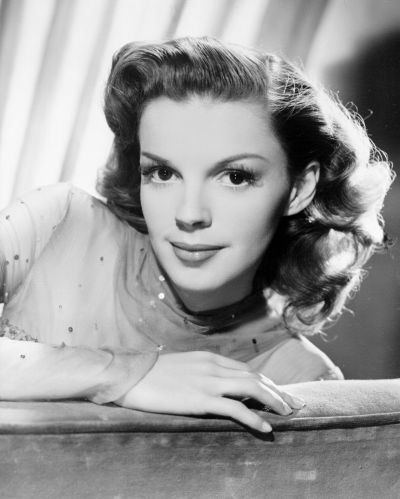
Straight people were being confronted with homosexuals right there on television beamed into their homes. And — more importantly — homosexuals were seeing themselves and their brothers/sisters on national television news. Gays in isolated places who had worshipped Judy Garland at the movies or on LP and tape, were now watching other gay people weeping for her in New York. For the first time, gay people in isolated places saw themselves on TV. We were not alone in our grief at the passing of a star with whom we somehow innately felt connected.
It was a Friday night. Late June. Hot and steamy. The bars were filled to bursting. Gay men were sharing a rare moment of solidarity in powerful emotions. There was a feeling, not only in New York, but around the world, that a paradigm shift had taken place. A gay icon had died suddenly and tragically (shades of Antinous) and we gay people everywhere found ourselves in a catharsis of identity change. None of us understood what was happening. Just as it was with being gay, we gay men couldn't explain it, we just "felt" it and "knew" it to be true.
And THAT moment was when the Manhattan police happened to stage one of their periodic raids on queers. Basically it was a routine raid on an average gay bar. Nobody had reckoned with what would happen next. Even gay men were surprised by what happened next.
ESPECIALLY gay men.
We were men who had been accustomed to being timid fraidy-cats. Men who had never dared to stand up for their sexuality. Drag queens and faggots never fought back. That was a fact of gay survival. We knew we were gay. And we knew what we weren't. We were not "MEN".
Grief turned to outrage. It was a spontaneous uprising fuelled by rage. The vice squad was overwhelmed. Reinforcements had to be sent in. Gay men stood their ground and advanced on the police, pushing them back.
It was the turning point for us. Gay men throughout America — and later in London, Berlin, Sydney and elsewhere — began standing up for themselves under the banner "Remember Stonewall".
In a sense, Judy Garland died for us. Had it not been for her tragic death — strangling on vomit over a toilet bowl in a London hotel suite — there might not have been any Stonewall Riots.
Flamen Antinoalis Antonius Subia puts the Stonewall Riots into a spiritual context:
"It was the first resistance by homosexuals against the repression of two thousand years, and the beginning of the Gay Liberation movement. The importance of the Stonewall Riots is the awakening of gay consciousness, the throwing off of the coils of the python that had for so many centuries enveloped our divine form of Love. This sacred revolt is holy to Apollo, Dionysus, and Diana combined as the guardian spirits of Homosexuality. Our modern Gay society was born on this occasion, and all of the peace and freedom that we have obtained in the these short decades are due to the courage that erupted on that Sacred Night in front of the Stonewall Bar."

The last of our three Uranian Patriarchs, Edward Carpenter was born in Brighton England on the 29th of August, 1844, to a very large middleclass family. While his brothers went into the military, Edward became a scholar, with great success and eventually even taught at Cambridge where he was required to become ordained as a curate of the Anglican Church.
It was at this time, when he was 24, that he first read Leaves of Grass by Walt Whitman and was completely changed. He resigned his position at Cambridge and devoted his life to the working class, becoming a Socialist philosopher, lecturing, organizing and speaking for working men.
When his parents died, he received an inheritance that he used to purchase a rural estate at Millthrope, which he turned into a veritable Socialist Commune. He repressed his homosexuality for much of his life, channeling his desire into politically inspired friendships.
But the Millthrope house gave him the freedom to express his feelings more openly, and he began to write books on the subject of Uranian Love. He was deeply influenced by Hindu spirituality, and visited India, all of which emerged in his spiritual view of the Socialist movement, which was not so much about political revolution, but directed towards a change in human consciousness, of which homosexuality rapidly became his greatest cause.
While returning from India he met George Merrill on the train. It would be the love of his life. The younger man soon moved into the house at Millthrope, the two became inseparable lovers whose relationship lasted over forty years.
In 1908, he published The Intermediate Sex, the first widely available book on the subject of homosexuality. After the death of John Addington Symonds, with whom he had been closely allied, Edward Carpenter assumed the role as torch bearer, and subsequently published dozens of books and essays for the cause of gay liberation.
He died on the 28th of June, 1929, in Guildford England, and though not widely known at the time, was to later become a spiritual patriarch for the gay liberation movement of the late 1960s and '70s. He is regarded as a Saint and Patriarch of the Religion of Antinous, and remembered as one of the first fathers whose work changed the world with subtle power.
.jpg)
On July 18th the Religion of Antinous honors Saint Caravaggio.
Michelangelo Merisi da Caravaggio, who died under suspicious circumstances on this day in 1610, was an extraordinary painter whose homoerotic images of young men have caused art historians to call him the first modern painter.
St. Caravaggio is the Patron of Gifted Bad Boys — Gay Boys who are blessed with incredible talents but who are too impatient and too rebellious to abide by the rules of society.
St. Caravaggio was always in trouble. In 1592, when he was not yet 20 years old, he fled Milan after a series of brawls and the wounding of a police officer. He went to Rome and was there, for the most part, until 1606, when he again had to flee. His life in Rome was of growing financial and professional success, but it was also punctuated with crime.
In the years 1600-1606 alone, he was brought to trial no less than eleven times. The charges covered a variety of offences, most involved violence. It is significant that, despite his reputation for homosexuality, and his endless brushes with the police, he was never charged with sodomy, then a capital offence.
But he was charged with murder. On 29 May 1606 he killed one Tommasoni in a brawl after a disputed game of royal tennis, and had to flee to escape execution. He went first to Naples, then to Malta, where he was feted and made a Knight of St John.
Then, after "an ill considered quarrel" with a senior knight, he was on the run once more, all around Sicily, then on to Naples again.
But this time there was no hiding place. The knights, known for their relentlessness, pursued him, and Caravaggio, now 39 nine, in an attempt to seek forgiveness and refuge in Rome, tried to get there, but died at Porto Ercole, apparently of a fever, though the circumstances are highly suspicious.
Despite his hunted and, in the end, desperate life, he always managed to go on painting, often without a proper workshop of any kind. He was variously described, even by admirers, as a man of "stravaganze" as "uno cervello stravagantissimo" (exceptionally odd) and a "cervello stravolto".
His father died when he was six, his mother when he was 18, which may help to explain his anger at the world. His paintings show that he was a man of the most profound religious convictions, of a humble and contrite heart, and with a fanatical devotion to his art.

His fundamental ideas were always absolutely clear, though he continually changed and improved his techniques. He believed in total realism, and he always painted from life, dragging poor people in from the street if need be.
He became a great realist by painting flowers and fruit, in a variety of lights, sometimes pure still lifes, sometimes with street boys, such as the model for Bacchus (above).
To achieve realism, he liked to pull his subject out of surrounding darkness into strong lateral or overhead light, as close to the viewer as possible.
This was a new kind of art, which was to have momentous consequences. It has led some modern writers to speculate that, born into the 20th or 21st Century, Caravaggio would have been a photographer or a filmmaker.
But that is nonsense. Caravaggio, it is clear, adored the feel and line of a brush on a slightly springy surface, prepared with grey (as a rule), and the sheer creative excitement of using the brush to bring the real world out of the darkness of the canvas.
For the first time in the history of art, Caravaggio eliminated the space between the event in the painting and the people looking at it. He created a kind of virtual reality to give you a feeling as though you are right there inside the painting.
Even we, whose vision and sense of reality has been blunted and distorted by television and the cinema, still get tremendous impressions of participating when we see his great canvases close up. What then must it have been like in the early seventeenth century, for people who had never come across anything approaching this blast of actuality, to be brought face-to-face with a reenactment of sacred events in two dimensions, such as St. Francis of Asisi in Ecstasy?
Artists were particularly struck, or perhaps shocked is a better word, but horribly stimulated too, and stirred to find out exactly how the man did it.
Caravaggio, despite all his difficulties, always finished each piece of work if he possibly could, then went directly on to another, with fresh ideas and new experiments.
He was a Bad Boy. But he was a gifted genius. The Religion of Antinous honors this Patron of Gifted Bad Gay Boys as an exemplar and saint. Let us lift our glasses to St. Caravaggio.

The Iranian Government publicly executed two teenage boys on July 19th, 2005, in the city of Mashad. Their names were Mahmoud Asgari and Ayaz Marhoni, one 18 and the other 17 or 16 years old.
They were accused of raping a 13-year-old boy, but it has been established that the authorities invented the charge of rape in order to prevent public sympathy for the true reason for their execution, that they were Homosexuals.
After their arrest the two boys endured a year of imprisonment and torture before the high court of Iran upheld their sentence and their execution by hanging was carried out in a public square in the city of Mashad.
International outrage was met with arrogance and impunity by the religious and conservative Iranian government, and a systematic persecution soon began against homosexuals, which has led to an unabated spate of sporadic executions over the years, and untold numbers of arrests and torture.
These events indicate that the worldwide struggle for Gay Freedom has not decreased but has become more violent and inhumane.
The photograph at left of the Martyrs just before their death is one of the first depictions ever photographed of anti-homosexual violence in action.
For their suffering, we proclaim Mahmoud Asgari and Ayaz Marhoni and all of the unnamed gay victims of Iranian persecution, Saints and Innocent Martyrs of the Religion of Antinous.
May all those who see this image of violence rise up for the cause of Gay Freedom, and remember those who suffer in Iran.

It is said that on the night before the mother of Alexander, Olympias, was to be married to King Phillip of Macedonia, she dreamt that a thunderbolt struck her body and filled it with power.
After the marriage, it is said that Phillip peeked into her chamber, and found her lying with a serpent, and that he afterward dreamt that her womb was sealed and that a lion dwelled within her. And on the night that he was born, 20th of June, 356 BCE, the great Temple at Ephesus was burned to the ground by a vandal, because the goddess Artemis was away, assisting with the birth of Alexander the Great.
He was considered to be the son of Zeus, and this divine origin was what was given as an explanation for the unprecedented conquests that he accomplished. In his youth Aristotle, a student of Plato, educated him along with his following of young princes, who were later serve as his generals, and the founders of great dynastic monarchies of the Hellenistic world.
Foremost of these was his ever loyal and devoted Hepheistion, whose reciprocated love for Alexander was homosexual in nature.
In one of their first battles, while Phillip was still king, the young Alexander proved himself by defeating the Sacred Band of Thebes, the army of homosexual lovers who were the most famous and courageous warriors of their time.
Alexander is said to have wept at their destruction, and buried them with honor, erecting a statue of a Lion over their graves.
He would later go one to conquer the entire Eastern world, Asia Minor, Syria, Judea, Egypt, and all of Persia, as far East as India. The Empire of Alexander spread Greek culture throughout the world, and made the communication of far-distant ideas possible so that the new Hellenistic culture that he created, was a combination of classical Greece and of the exotic cultures that were imported from every corner.
After the death of Alexander, at only 33 years of age, he was deified by his generals who divided his great Empire among themselves. We praise the glorious warrior Alexander of Macedonia, and elevate him, and worship him as a God, an example of the greatness of homosexuality, and a heroic protector of the Divine Antinous.

On July 21 the Religion of Antinous honors St. Hart Crane (July 21, 1899 — April 27, 1932) a great and openly gay American poet whose poetry was considered "beyond comprehension" by straight readers but which is easily understood by gays. He was one of the most influential poets of his generation, but — like so many gay men — was plagued by doubts and low self-esteem and feelings of failure.
Crane was gay and he considered his sexuality to be an integral part of his life's mission as a poet. Raised in the Christian Science tradition of his mother, he was never able to shake off the feeling that he was an outcast and a sinner.
However, as poems such as "Repose of Rivers" make clear, he felt that this sense of alienation was necessary in order for him to attain the visionary insight that formed the basis for his poetic work.
Throughout the early 1920s, small but well-respected literary magazines published some of Crane's lyrics, gaining him, among the avant-garde, a respect that White Buildings (1926), his first volume, ratified and strengthened. White Buildings contains many of Crane's best lyrics, including "For the Marriage of Faustus and Helen", and a powerful sequence of erotic poems called "Voyages", written while he was falling in love with Emil Opffer, a Danish merchant marineman.
He wanted to write the great American epic poem. This ambition would finally issue in The Bridge (1930), where the Brooklyn Bridge is both the poem's central symbol and its poetic starting point.
The Bridge got mostly bad reviews, but much worse than that was Crane's sense that he had not succeeded in his goal. It was during the late '20s, while he was finishing The Bridge, that his heavy drinking got notably heavier. The partial failure of the poem perhaps had something to do with his increasing escape into booze.
While on a Guggenheim Fellowship in Mexico in 1931-32, his drinking continued while he suffered from bouts of alternating depression and elation. His only heterosexual affair, with Peggy Cowley, the wife of his friend Malcolm Cowley, was one of the few bright spots. And "The Broken Tower", his last great lyric poem (maybe his greatest lyric poem), emerges from that affair. But in his own eyes, he was still a failure.
Crane was returning to New York by steamship when, on the morning of April 26, 1932, he made advances to a male crewmember and was beaten up. Just before noon he jumped overboard into the Gulf of Mexico. His body was never found.
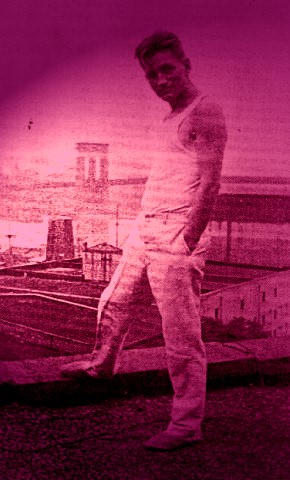
Here is a poem which straight people found inscrutable and obscure, but which gay readers understood was about anonymous gay sex:
INTERIOR
It sheds a shy solemnity,
This lamp in our poor room.
O grey and gold amenity, --
Silence and gentle gloom!
Wide from the world, a stolen hour
We claim, and none may know
How love blooms like a tardy flower
Here in the day's after-glow.
And even should the world break in
With jealous threat and guile,
The world, at last, must bow and win
Our pity and a smile.

On August 10th, the Religion of Antinous honors the Reverend Montague Summers, saint of Antinous, who was a very upfront and openly gay member of the Sacred Band of Lover/Warriors at the turn of the last century and who published a book of Uranian poetry entitled Antinous.
Born April 10, 1880, the Rev. Montague Summers died at the age of 68 on this day in 1948.
Here is a splendid contemporary description of him:
"During the year 1927, the striking and somber figure of the Reverend Montague Summers in black soutane and cloak, with buckled shoes — à la Louis Quatorze — and shovel hat could often have been seen entering or leaving the reading room of the British Museum, carrying a large black portfolio bearing on its side a white label, showing in blood-red capitals, the legend 'VAMPIRES'."
While everyone else in Late Victorian and Edwardian England was constrained by strictures of class and morals, Montague Summers thumbed his nose at all restrictions of any kind. Having studied theology to become an Anglican clergyman, he suddenly claimed he had received a visionary call to become a Roman Catholic priest. He donned self-styled priestly robes and called himself "Reverend Alphonsus Joseph-Mary Augustus Montague Summers" — when in fact he had not been ordained officially by anybody.
It was shocking enough in England to convert to Catholicism and become a priest. But to become a fake priest was even more scandalous. But there was more ....
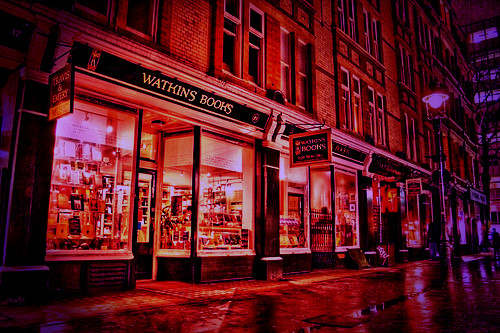
All the while he was also seriously studying the Occult and became friends with the crowd of Occultists who hung out at Watkins Books just off Leicester Square in London's theatre district — still even today one of the "craftiest" places to see and be seen.
In the late 19th Century, Watkins was the only book shop in England (or perhaps in the world) which specialized in esoteric books and witchy things. It was frequented by Madame Blavatsky and Bram Stoker and Arthur E. Waite and Pamela Colman Smith and — of course — Aleister Crowley. Summers became friends with Crowley and they enjoyed playing off each other, claiming they were opposite "polarities" of magical craft.
When Crowley announced he was a modern-day wizard, Summers responded by announcing he was a modern-day Catholic witch hunter. He wrote his own Malleus Maleficarum which claimed to be an accurate account of witchcraft and of the methods necessary to combat it.
He also wrote a book on The History of Witchcraft and Demonology, saying:
"In the following pages I have endeavored to show the witch as she really was — an evil liver: a social pest and parasite: the devotee of a loathly and obscene creed: an adept at poisoning, blackmail, and other creeping crimes: a member of a powerful secret organization inimical to Church and State: a blasphemer in word and deed, swaying the villagers by terror and superstition: a charlatan and a quack sometimes: a bawd: an abortionist: the dark counselor of lewd court ladies and adulterous gallants: a minister to vice and inconceivable corruption, battening upon the filth and foulest passions of the age".
As with everything that Rev. Summers wrote, it is difficult to determine whether his intention was to condemn or to praise. He was so clearly fascinated by the Occult that one never knew quite whether he was "for it" or "against it."
There was no doubt, however, about his love of handsome youths. It was said that he had never been ordained because of rumours of improprieties with boys as a school teacher, teaching upper class English schoolboys the finer points of Latin.
Indeed, Summers was for a while part of the circle of the Uranian poets, who celebrated ancient Greco-Roman erastos/eromenos man-boy love. His first book, Antinous and Other Poems appeared in 1907 and was dedicated to male-male love.
He was fascinated by Classical male-male love, and by the lives of the Catholic saints, especially Saint Catherine who was drawn and quartered and who lives on as the English teatime "Hot Cross Bun" symbolizing the way Catherine was torn limb-from-limb into four gore-spewing pieces rather than give up her faith. Very tasty with tea and clotted cream.
Rev. Summers reveled it telling young boys that their favorite snack symbolized the brutal dismemberment of a lady of faith. All of it told alongside Latin grammar lessons and tales of vampires and werewolves.
After his books on witchcraft, he wrote authoritative books on vampires, including The Vampire: His Kith and Kin (1928) and The Vampire in Europe (1929), and later a definitive book on werewolves, The Werewolf (1933). The werewolf book influence a whole generation of movie-makers, especially the German writer Curt Siodmak who wrote the screenplay for the 1941 horror classic The Wolf Man starring Claude Rains and Lon Chaney Jr.
Nearly everything that you have seen in Hollywood werewolf movies (wolf bane, silver bullets, etc.) comes straight from Curt Siodmak's reading of Rev. Summers book back in the 1930s.
The main difference between Rev. Summer's books on vampires and werewolves and books by other experts was that the other experts referred to these beings as "folklore superstitions" or as "pathological psychoses" in deranged minds. But when you read Rev. Summers' books, you know that he believed in the real actual true-life existence of vampires and werewolves.
In the old Hollywood werewolf movies, when a character went to the bookshelf and pulled down a book on werewolves and turned to a page with a woodcut illustration of a man-wolf — that was a cinematic reference to the 1933 book by Rev. Summers which was in fact on the shelves of well-stocked scholarly libraries around the world.
Summers's work on the occult is notorious for his unusual and old-fashioned writing style, his display of erudition, and especially his undoubted belief in the reality of the subjects he treats.
He was also fascinated by 19th Century Gothic literature. The genre was best exemplified by Mary Shelley's Frankenstein early in the century and the genre came to a thrilling close at the end of the 19th Century with Bram Stoker's Dracula.
Uptight Victorian readers had read Gothic horror novels with a mixture of shock and delight and Summers recognized the art form of the Gothic novel as a symbol of a romantic backlash against urbanization and industrialization.
He knew that "horror" was here to stay as a part of popular culture — as indeed it is. Every book shop, every video/DVD store has a big "Horror" section.
He helped to make horror a serious study of academic research by writing The Gothic Quest: a History of the Gothic Novel (1938), A Gothic Bibliography (1940) and he published a collection of Gothic horror stories in The Supernatural Omnibus (1931) and Victorian Ghost Stories (1936).
Above all, Rev. Summers was very strange and eccentric. The Times of London called him "in every way a 'character' and in some sort a throwback to the Middle Ages". He was also unabashedly and openly homosexual in an age when others (such as St. Oscar Wilde) faced jail and ruination for being gay.
Summers was a member of the Order of Chaeronea, a secret society for gay men founded in 1897 by George Ives, which was named after the location of the battle where the Sacred Band of Thebes was finally annihilated in 338 BC. The Sacred Band consisted of 150 homosexual couples and the reason was that lovers would fight more fiercely and more cohesively at each other's sides than would heterosexual men who were "just buddies."
Rev. Summers is a Blessed Prophet of Homoeros and a Dedicant and Messenger of Antinous among the Aula Sancti Ecclesiae Antinoi (our list of saints).

On August 12th, the Religion of Antinous honors Hercules Invictus, the champion of homosexuality.
The Great God Hercules, defender of mankind against chaos, the son of Zeus, the strongest and mightiest man that has ever lived, was one of the first of the Greek gods to be worshipped by the Romans.
The Greeks of southern Italy introduced the Cult of Hercules at such an early date that the Romans were convinced that Hercules was indigenous. Indeed, he was admitted by Romulus into the sacred Pomeria, the spiritual protective wall of the city of Rome.
The cult of Hercules was centered at Tibur, where Hadrian built his magnificent Villa, and Hadrian is often compared to Hercules for his travels, his physical strength, courage, and his sexual prowess.
Hercules was driven mad by Hera and forced to murder his wife and children. In order to atone for his sin, he visited the oracle of Delphi and was instructed to submit to twelve labors.
Hercules accomplished them all, and many others including the release of Prometheus from bondage. He was also a sexual champion and the number of his lovers is very long, and they include boys such as Abderus, Chonus, Haemon, Hylas, Iokastus, Iolaus, Nestor, Philoctetes, Polyphemus, Telamon, Abderus, Admetus, and Dryops.
Without question, Hercules was a champion of homosexuality, and a defender of mankind against the forces of evil. For his benefit to mankind, he is venerated as a God and Protector of Ecclesia Antinoi.
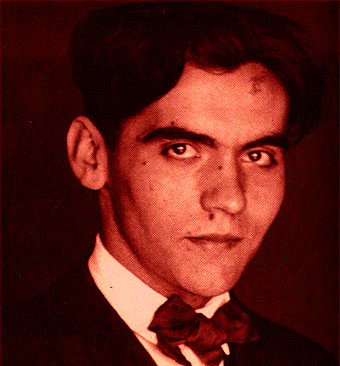
On August 19th, the Religion of Antinous honors St. Federico García Lorca, who was openly gay and who is one of the greatest poets of the Spanish language. He was executed by the Fascists on this day, August 19th, during the Spanish Civil War in 1936.
García Lorca's central themes are love, pride, passion and violent death, which also marked his own life. The Spanish Civil was just getting underway in August 1936 and García Lorca was seen by the right-wing forces as an enemy. The author hid from the soldiers but he was eventually found.
An eyewitness has told that he was taken out of a Civil Government building by guards and Falangists belonging to the "Black Squad". García Lorca was shot in Granada without trial. The circumstances of his death are still shrouded in mystery. He was buried in a grave that he had been forced top dig for himself.
According to some sources, he had to be finished off by a coup de grâce. One of his assassins later boasted, that he shot "two bullets into his arse for being a queer".
It was the end of a brilliant career as a poet and dramatist who was also remembered as a painter, pianist and composer.
In the 1920s he was close friends with Luis Bu?uel and Salvador Dal?, among many others who later became influential artists in Spain. Despite the accolades from artists and critics, he suffered from bouts of depression brought on largely by his inner conflict about his homosexuality.
He was tortured by the demands of being a celebrity in a homophobic society and the yearnings of his gay soul.
During his lifetime only a handful of close friends were allowed to read the collection of gay poems which would be published many years later as his Sonnets of Dark Love. Here is one of them, entitled Love Sleeps in the Poet's Heart:
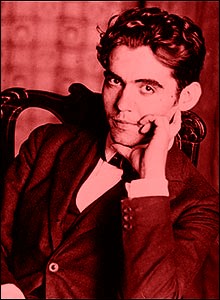
You'll never understand my love for you,
because you dream inside me, fast asleep.
I hide you, persecuted though you weep,
from the penetrating steel voice of truth.
Normalcy stirs both flesh and blinding star,
and pierces even my despairing heart.
Confusing reasoning has eaten out
the wings on which your spirit fiercely soared:
onlookers who gather on the garden lawn
await your body and my bitter grief,
their jumping horses made of light, green manes.
But go on sleeping now, my life, my dear.
Hear my smashed blood rebuke their violins!
See how they still must spy on us, so near!
With the Catalan painter Salvador Dalí and the film director Louis Buñuel he worked in different productions.
Dalí and Lorca had met in 1923. From the beginning, Lorca was fascinated by the young Catalan's personality and looks. Also Dalí had admitted that Lorca impressed him deeply.
When Buñuel and Dalí made their famous surrealist short film Un Chien Andalou (1928), García Lorca was offended: he thought that the film was about him.
Lorca's friendship with Dalí inspired a poem, a defense of modern art and at the same time an expression of homosexual love. Dalí dedicated his painting of Saint Sebastian to his friend, who often compared himself to the tortured homoerotic martyr.
"Let us agree," Lorca wrote to Dalí, "that one of man's most beautiful postures is that of St. Sebastian."
"In my 'Saint Sebastian' I remember you," Salvador Dalí replied, ". . . and sometimes I think he IS you. Let's see whether Saint Sebastian turns out to be you."
García Lorca was capable only of a "tragic, passionate relationship," Dalí once wrote — a friendship pierced by the arrows of Saint Sebastian.
The Religion of Antinous honors this great artist who lived and loved tragically and passionately and who died tragically for being gay.

On August 28th, the Religion of Antinous honors Saint Karl Heinrich Ulrichs, the world's first gay activist, who lobbied governments 100 years before Stonewall for repeal of anti-gay laws, and who was also Chief Priest of Antinous worldwide in the latter half of the 19th Century.
Even before the term "homosexuality" had been coined, Ulrichs came out to his friends and families and proclaimed in 1864 that he was a "Uranian" — or "Urning" in his native German — and thenceforth waged a one-man campaign for gay rights in Germany.
Sanctus Carolus Henricus Ulrichs, Chief Priest of Antinous in the 2nd half of the 19th Century (worldwide!) wrote incredibly long poems ? nearly in epic form ? about Hadrian and Antinous.
He wrote a manuscript for a mammoth scientific work on Antinous in history, art, coins and his influence on ancient and modern culture. The manuscript was confiscated and destroyed in a police raid.
As part of his gay-rights lobbying effort, he wrote dozens of pamphlets with titles such as "Researches on the Riddle of Man-Manly Love" aimed at dispelling homophobic myths about same-sex love.
Late in life Ulrichs wrote: "Until my dying day I will look back with pride that I found the courage to come face to face in battle against the spectre which for time immemorial has been injecting poison into me and into men of my nature. Many have been driven to suicide because all their happiness in life was tainted. Indeed, I am proud that I found the courage to deal the initial blow to the hydra of public contempt."
Forgotten for many years, Ulrichs is now becoming something of a cult figure in Europe. There are streets named for him in the German cities of Munich, Bremen and Hanover. His birthday (August 28th, 1825) is marked each year by a lively street party and poetry reading at Karl Heinrich Ulrichs Square in Munich.
The International Lesbian and Gay Law Association presents an annual Karl Heinrich Ulrichs Award in his memory. He died on July 14th, 1895, in L'Aquila, Italy.